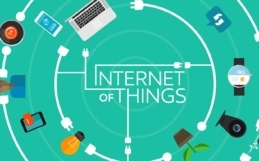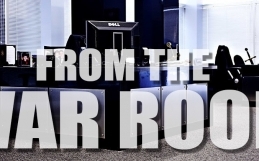Again. I can’t get over the lack of a keyboard. After 10 years of typing on a BlackBerry, I was fast. With the iPhone, after 2 weeks, I’ve just moved from pathetic to poor. My Auto-correct issues are becoming the stuff of comedy legends (BTW, my wife & I have had some great laughs at this website: www.damnyouautocorrect.com – rated R). I miss the keyboard. I miss it terribly. But I will adapt. I’ve learned enough cool little tricks that enhance productivity to compensate. And I’ve also discovered a few peeves that are worth sharing. I’ll run through that list and then explain why we didn’t consider an Android device in this comparison project. In the end, I am definitely pleased with iPhone experience, but the battle is not over.
First, I am in love with Siri. Holy sh_t this is an amazing feature. Basically, you say a command into the device and it will do its damnedest to give you an answer. It’s like the voice commands in some cars combined with voice activated Google-like searching. I use it to call or email while driving, set my alarms, and lookup long phrases in Google. It does way more too … see here.
There is no MicroSD support. This is NOT an issue for me. There should be no data on the device. I use iTunes for media and DropBox for sharing big marketing files. More importantly, I use Citrix XenDesktop to access my corporate apps so all my critical data stays in the IT Weapons Data Centre where it’s safe. If you really need to get something in there – grab the converter dongle. This was never an issue with my BlackBerry either.
No removable battery. This kinda sucks if the device ever crashes (like my BlackBerry did all the time). Happily, it hasn’t happened with the iPhone yet. There is a way to shut it down though: Hold Down Top Right Corner Button; a screen will show ‘Slide to Power Off’.
No MP3 or WAV custom ring tones. This just plain bugs me. It’s my device … why can’t I make it play whatever sound I want. Grrrr. You can only select from a list or pay Apple to download one. Boo, Apple. Boo.
I love the personal Hot Spot functionality. Now my phone can be the MiFi when at a meeting or conference (or driving in the car with the kids for their iPads – yes plural – they are geeks too. Sigh.) and peers can get online via my connection. This has come in handy plenty of times already.
The user interface in the email app is definitely less efficient than the BlackBerry counterpart. I am hoping that in a month or so, when I get used to it, and type faster, I will have an improved opinion. I did learn that 2 taps on the top of the email app screen will bring you to the top of your email list. That’s handy.
Drafts: if you were drafting an email and had to leave it. When you go back to the email app, just press and hold the Compose button and it will bring up the last draft email you were working on. Another nice feature!
You can take screenshots of anything you are doing and save the images on the Camera Roll. Pressing both the front button and top button will take a screen shot and place it on the Camera Roll. While you’re surfing, you just tap and hold an image and the iPhone will ask you if you want to save it. I love this feature.
Why No Androids?
The answer is simple. Security for Android devices is abysmal. Especially in a corporate environment. The Android App infrastructure is controlled so loosely that people are able to upload poorly written or outright virus-laden apps with virtually no hindrance. The problem is that too many of today’s Gen-Y users just download and run anything because it’s cheap and easy. I support open source initiatives, but that kind of freedom comes with tremendous risk. I think of open source as great for idea development (maybe for a school or a think tank) but it’s not a great idea for the masses of under-educated users in our businesses. The Android platform is like having the most powerful car on the block but there is no driver seat or steering wheel. Wait, that’s not quite right. It’s like having the most powerful car on the block with a steering wheel for every seat. If somehow you could trust all the drivers and keep them in sync, it would be untouchable/awesome. How likely is that? Not very. So we simply set this platform aside.
The IT industry keeps repeating these mistakes. UNIX (& eventually Linux) had a mature product when Windows was in its infancy, but they fragmented the market so bad (via Open Source), that UNIX became relegated to a niche and server status. Android is following a similar path. People seem to overlook that it’s not about the handset – it’s about the entire experience, and the platform itself. Until others learn that each piece of the ecosystem, from development to user experience, to desktop integration, must work smoothly (and consistently), the iPhone will continue to dominate, including platform retention, which is a major failing of Android. At least in my opinion.
The Next Episode: The Battle for the BlackBerry. Can BlackBerry turn things around and secure their place in the mobile device space?




